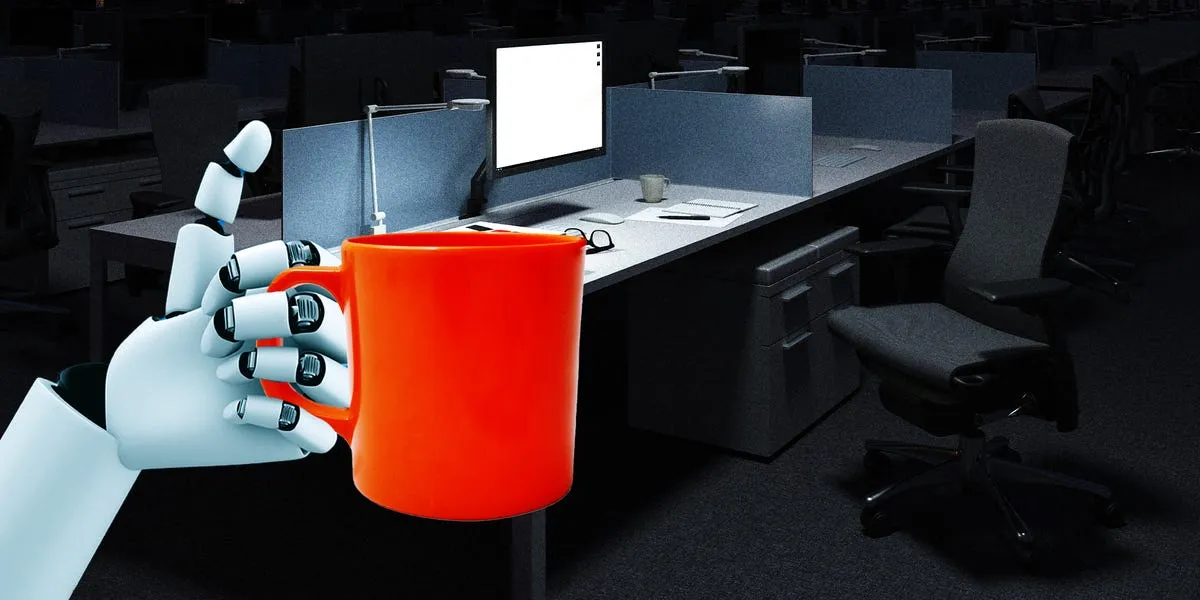
In March 2023, Shopify's CEO introduced a significant rule for managers: before requesting additional headcount, they must demonstrate that artificial intelligence (AI) cannot perform the job as effectively as a human. Shortly after, Duolingo's CEO echoed this sentiment, declaring a strategy to gradually replace contractors with AI solutions. These announcements reflect a growing trend I've observed in conversations with various employers — the rise of AI is leading to reduced hiring rates.
Initially, when I began reporting on the influence of ChatGPT and other AI technologies on the labor market, I anticipated that it would take years for AI to significantly alter job dynamics. However, recent developments have prompted me to reconsider — has the AI revolution already arrived? To investigate this pressing question, I consulted Revelio Labs, a provider of workforce analytics that compiles extensive data from online job postings. Their goal was to identify which jobs are currently being impacted by AI, not just in a theoretical future but in the present day.
Zanele Munyikwa, an economist at Revelio Labs, examined job descriptions in online postings to identify responsibilities that AI can either perform or enhance. Her analysis revealed a concerning trend: over the past three years, the share of tasks that can be automated by AI has decreased by 19%. This decline primarily stems from companies hiring fewer individuals for roles that AI can effectively manage.
Further analysis segmented occupations into three categories: those with a high exposure to AI (high-exposure roles), those with limited AI-doable tasks (low-exposure roles), and those in between. Following the release of ChatGPT in 2022, there has been a general decline in job openings across all categories. However, the reduction in high-exposure roles has been more pronounced at 31% compared to 25% for low-exposure roles. This trend highlights that jobs easily performed by AI are vanishing from job boards at a faster rate than those that require human intervention.
So, which jobs are most susceptible to AI? Roles heavily involved in technology, such as database administrators, IT specialists, information security, and data engineers, are at the highest risk. Conversely, jobs requiring in-person interaction, such as restaurant managers, foremen, and mechanics, exhibit the lowest exposure to AI automation.
This isn’t the first study to explore AI's early impact on the labor market. In 2023, researchers from Washington University and New York University focused on freelancers in writing-related professions. Their findings indicated that after the introduction of ChatGPT, jobs in these sectors declined by 2% on platforms like Upwork, while monthly earnings dropped by 5.2%. The researchers concluded that generative AI has reduced overall demand for knowledge workers across the board.
At Revelio Labs, Munyikwa is cautious about drawing conclusions from her findings. It's uncertain whether AI, in its current form, can adequately replace all white-collar jobs that employers envision it taking over. CEOs at companies like Shopify and Duolingo may eventually realize that reducing hiring for AI-exposed roles could be a miscalculation. The implications of AI on work quality, employee creativity, and overall business performance will be critical in determining the sustainability of this hiring freeze in the future.
Some companies are already reassessing their initial optimism regarding AI. Last year, fintech company Klarna claimed that its investment in AI allowed it to halt human hiring, with AI reportedly managing the workload of 700 full-time agents. However, Klarna has recently reversed this stance, beginning to hire human agents again and acknowledging that AI-driven cost reductions compromised service quality. CEO Sebastian Siemiatkowski stated, “It’s crucial to communicate to customers that there will always be a human element in support.”
As AI technology continues to evolve, there remains a strong desire among executives to minimize employee numbers. With increasingly sophisticated AI tools available, companies find it easier to replace human workers. Even Siemiatkowski anticipates reducing his workforce by another 500 employees through attrition in the coming year. He believes that as Klarna's technology improves, the pace of downsizing will accelerate. When asked about the timeline for such advancements, he stated, “It’s very likely within 12 months.”
As we navigate this transformative era, the labor market faces uncertainty. The balance between leveraging AI for efficiency and maintaining human input for quality will be a defining challenge in the years to come.